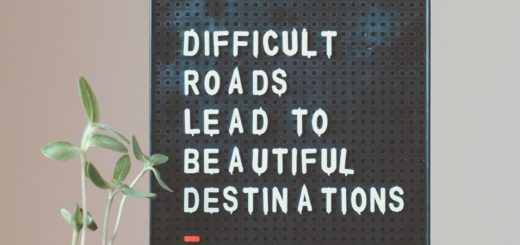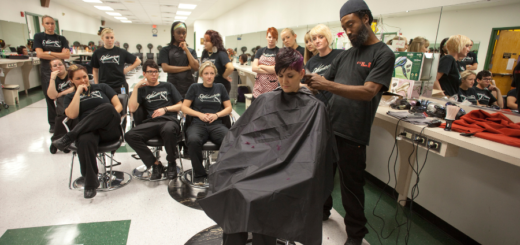Life Design: Your Crash Course
Where were you when you first heard the question, “What do you want to be when you grow up?” Most people are only children when they are asked to imagine all the career possibilities in front of them. Some say “doctor,” some say “astronaut,” and some (like me) say “Crocodile Hunter.” When was the last time you revisited that question? What many college students find, regardless of their age, is that they have already grown up, and they are no closer to blasting off into space or starring on “Animal Planet” than they were in kindergarten. Many of them don’t yet have a solid answer for that question, and they feel behind or slower than their peers because of it.
There is a prominent but dysfunctional belief that you must decide your entire life’s trajectory by the time you first enroll in college. Students have been told for decades that they need to find their passion and make their subsequent career decisions around that focus. There’s just one small problem: what do you do if you’re among the 80% of people who don’t have a single, definitive passion?
Recent higher education literature shows student pushback on the idea that you must make such a deterministic decision as your college major by the completion of 30 credit hours. What if your major had less of an impact on your entire life than you thought? What if I told you that close to 75% of college graduates (again, like me!) do not work in a field directly related to their major?
It turns out that the pressure you may be feeling is unwarranted—that you have the freedom to pursue your interests and incorporate them into your career journey through a process called Life Design. Life Design borrows principles from engineering to help you identify and address the obstacles standing between you and a fulfilling career. Think of it this way: designers don’t think their way forward; they build their way forward. As you build your way through the following steps of Life Design, you may just find yourself exploring and achieving something you didn’t know you were missing—your calling.
Accept: Start where you are. Take stock of your current standing in terms of career and educational experience. What aspects of your life need more attention than others?
Empathize: Designers usually implement this step when they are trying to see an issue from a consumer standpoint. “What sort of solution could we come up with to make auto manufacturers’ jobs easier?” In this case, you are the consumer. This is an excellent time for self-reflection into the nature of work and what you really want from a career. Is it just financial? Probably not. In your own words, what would you look for in a fulfilling career? What would make you look back on your autobiography and say that you had led a life well-lived?
Define: Apply the data you have gathered so far and find a specific goal. “I need a job,” is not a goal! Thanks to the Great Resignation, you can walk into just about any retail or food service establishment and join the team. Instead, you need to focus on finding that sense of fulfillment. “I want to find a career in which I’m appropriately compensated and can use my skills with software, creativity, and altruism.” Excellent. Let’s find it.
Ideate: Forecast today calls for a brainstorm! Safety note: bring snacks and a good attitude because a truly great brainstorming session involves multiple trustworthy people and no wrong answers. Use your support network: advisors, career professionals, mentors, professors, friends…whoever you think could provide some quality insight into your problem. Then take your list of options and break it down into your top choices. Once you have your shortlist, it’s time to put on your safety goggles. To the lab!
Prototype: Thomas Edison, the (let’s say as politely as we can) complicated figure that he was, left a grade-A legacy of prototyping. He famously tried to build a lightbulb hundreds of times, with attempt after attempt failing, but always with the dedication to make that next attempt—to build that next prototype. That’s what we’re doing here with career ideas. Though the concept is a little more abstract, the results are as definitive as Edison’s lightbulb. Say, for example, that “Crocodile Hunter” (or the grown-up version, Wildlife Biologist) has made it onto your shortlist. Do you know what it’s really like to interact with wildlife? Is there any way that we could talk to someone in that position to hear their perspective on building a career in conservation? Here you start to see the importance of networking! Talk to the Career Planning and Development Center about building your network through job shadowing, service-learning, LinkedIn, and student and professional organizations. There may just be a biology/wildlife organization (or, and I’m just spitballing here, a “Wildlife Society,” if you will) that you can join, and I bet they could make time for a field trip to the Everglades!
Test: Putting your prototypes to the test can seem daunting, but it’s the only way to separate the big ideas you keep from what you discard. Remember that either result from the testing stage is positive: you either find a career path that fits your parameters, or you eliminate one that does not. If “doctor” made it onto your list and you have reinforced that choice through conversations with working physicians and job shadowing, you’re on the right track. Now try to find a medical internship or, if you’re already in a healthcare program, pay close attention to your clinical experiences! Some people find that they would rather not go all the way up to an M.D., but rather earn a BSN or medical certification; less time and money spent, and you still get to help those in need! Believe me, you would much rather figure out that working as a physician is not going to be a good fit before the several years and thousands of dollars you spend on a medical degree.
Next Steps: Try Stuff!
Alas, I have to assign some homework, but I promise it will be worth your time. If you’ve taken the time to read this far, chances are that you could use some assistance with your career journey. Great! Your support network, myself included, is ready to help. The only assignment I have for you, if you’re as serious as I think you are about building a fulfilling career is…
Something.
That’s it! I want you to try something to move closer to your career goals. You don’t have to lock down an internship, write a cover letter, or apply for a job. I want you to start honing the mindset of actively building your future. If that’s too vague, let me give you a few examples of stuff to try:
- Meet with the Career Planning and Development Center to talk about your career goals.
- Write a paragraph or two reflecting on what work means to you.
- Start a LinkedIn profile and add a few of your professors, advisors, and peers.
- Speak to the Center for Service-Learning and Civic Engagement and volunteer on a project that matters to you.
- Visit with a professor during their office hours to learn more about their career journey and what makes them excited about their field.
- Invite your friends to a shared space (queso dip optional) for a quality brainstorming session.
Congratulations on your new role as a Life Designer. It’s a big responsibility to take charge of your future and resolve to build your way forward. Lucky for you (and us!), the entire EFSC community is here to support you along your journey to success and a well-lived life. Don’t forget to share your goals, aspirations, setbacks, and triumphs with us from right here on campus or wherever that journey leads you, including but not limited to outer space or “Animal Planet!” It’s a privilege to provide you with any assistance we can as you begin the process, but it’s up to you to go out and try stuff for yourself. So get going, and get building!
- Eat That Frog: A Tutorial - June 1, 2022
- Life Design: Your Crash Course - March 23, 2022







